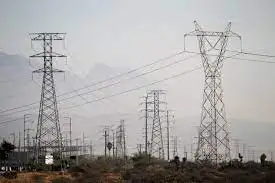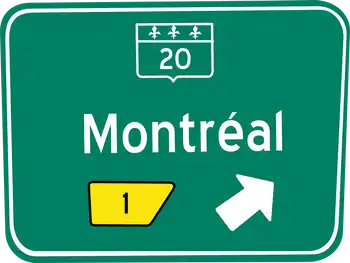Japanese make major power play
There's a global rush to build dozens of new plants over the next few years, and the competition to win contracts has developed into a three-way battle.
In the United States alone, there are plans for 33 new nuclear power reactors. In China, 22 are planned. Russia wants to build 10 and South Africa has plans for 13. India, with its soaring economy, has many projects in progress. The list goes on.
With hundreds of billions of dollars at stake, maneuvering has been frantic amid concern about global warming, coupled with surging crude oil prices.
What nuclear power generation has in its favor is that it emits less carbon dioxide, a greenhouse gas, compared with other types of power stations.
Things heated up after Toshiba Corp. acquired Westinghouse Electric Co. of the United States in February 2006 for about 478 billion yen.
The purchase triggered a domino effect among two domestic rivals.
Mitsubishi Heavy Industries Ltd. (MHI), which lost the bid for Westinghouse, entered into a partnership with France's Areva Inc. in October 2006.
The following month, Hitachi Ltd. agreed on an alliance with General Electric Co., which includes setting up a U.S. joint venture.
The immediate target is the United States following a decision to lift a freeze on new projects imposed in the wake of the Three Mile Island accident in 1979.
In 2005, the United States enacted a law to support construction of nuclear power plants through tax breaks and other measures.
To become eligible for preferential treatment, applications must be filed by the end of 2008.
Because the competition is so intense it is impossible to predict successful bidders.
For example, Hitachi, with GE's support, was initially considered a leading contender for a project to expand electric utility NRG Energy Inc.'s nuclear power plant in southern Texas.
Toshiba, however, won the contract to supply the reactor and other key equipment in 2007.
In 2006, Amarillo Power picked GE's advanced boiling water reactor (BWR) for a nuclear power plant planned in northern Texas.
The electric utility eventually decided it wanted a pressurized water reactor (PWR) developed by Areva.
Toshiba and Hitachi both expect that their partnerships with U.S. companies will make it easier to obtain the go-ahead from U.S. regulatory authorities.
Hitachi is also relying on GE's established business network and proven track record in the United States.
Competition is no less fierce in China.
In July, Westinghouse was awarded contracts to build four nuclear power reactors for four electric utilities.
But MHI outbid Toshiba, Westinghouse's parent, as the supplier of two steam turbines for one of the reactors last September.
Around the world, plans are on the drawing board for new nuclear reactors.
In July 2006, Britain ended a 17-year freeze on construction of nuclear power plants.
In emerging markets, the Japanese companies are also competing with fledgling nuclear power plant builders from Russia.
MHI, together with Areva, is developing a low-cost, midsized PWR specifically for those markets.
The company plans to introduce the new reactor by 2010, saying that PWRs account for 70 percent of global demand.
MHI and Areva specialize in PWRs, while Hitachi and GE manufacture BWRs.
Toshiba has the advantage of offering both types because it deals in BWRs and Westinghouse PWRs.
The company aims to become a nuclear-power conglomerate encompassing everything from fuel production to plant construction.
In a step toward that goal, Toshiba has acquired a stake in a uranium mine in Kazakhstan. The company is also considering undertaking reprocessing of spent nuclear fuel.
Toshiba, Hitachi and MHI formed cross-border alliances with Western partners because of stagnant domestic demand.
A key challenge for the nuclear power plant makers is how to maintain technical expertise. That includes securing experienced personnel.
The first evolutionary power reactor, designed by Areva, is under construction in Finland, and MHI is responsible for producing the reactor containment vessel.
But the construction schedule has been delayed substantially because the foundation work, managed by Areva, had to be redone due to poor oversight.
The problem apparently stemmed from the loss of construction know-how during the long drought of nuclear power plant projects.
Labor management has been found inadequate at some thermal power plants, and industry officials are concerned that similar problems could occur at nuclear power plants.
"Nuclear power plant builders will have to undergo a trial-and-error period until one of the newly planned facilities starts operations," said a Hitachi official.
"In addition, the contractors will have to examine clients' capabilities to see whether they can carry out the projects on schedule."
To minimize on-site portions of construction work, the companies plan to assemble reactor buildings and other large-ticket items in Japan and ship them to overseas project sites.
Related News

Swiss Earthquake Service and ETH Zurich aim to make geothermal energy safer
BERN - The Swiss Earthquake Service and ETH Zurich want to make geothermal energy safer, so news piece from Switzerland earlier this month. This is to be made possible by new software and the computing power of supercomputers. The first geothermal tests have already been carried out in Iceland, and more will follow in the Bedretto laboratory.
In areas with volcanic activity, the conditions for operating geothermal plants are ideal. In Iceland, the Hellisheidi power plant makes an important contribution to sustainable energy use.
Deep geothermal energy still has potential. This is the basis of the 2050 energy strategy. While the inexhaustible…





